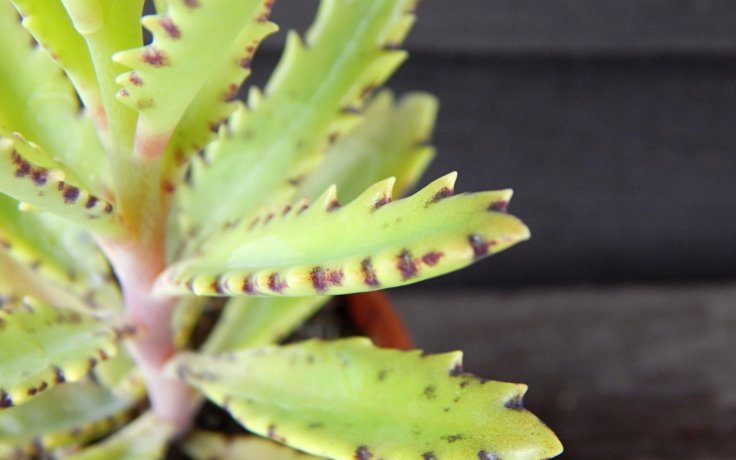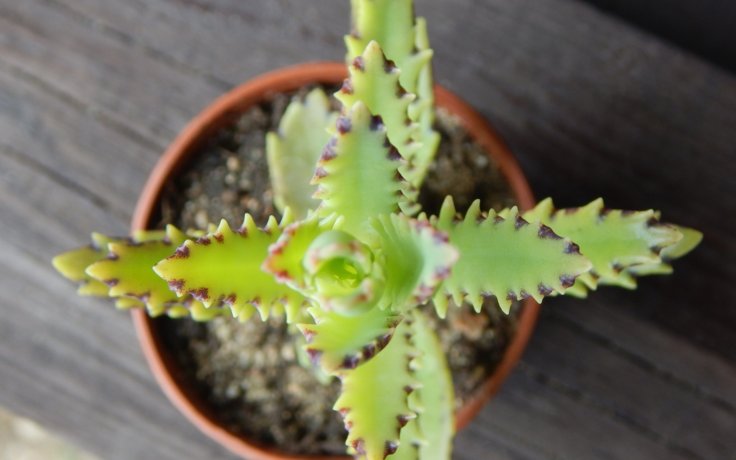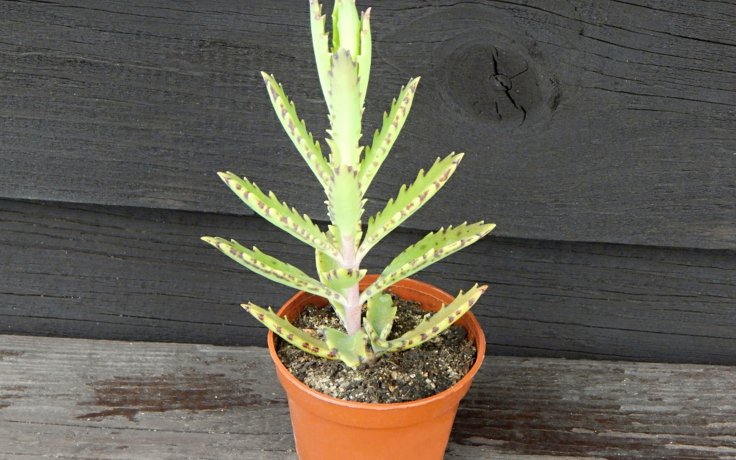- Home
- Succulents
- Kalanchoe
- Kalanchoe richaudii





Kalanchoe richaudii
Place ideally in a sunny position.
Always water a few days after the substrate has dried out. Reduce watering in winter.
It can tolerate -1.1 °C in the short term. However, the plant is not hardy.
This is a natural hybrid, which is a cross between Kalanchoe rosei and Kalanchoe delagoensis.
Kalanchoe richaudii, formerly known as Kalanchoe serratum or Bryophyllum serratum, is a succulent plant that was created by a natural cross between Kalanchoe rosei and Kalanchoe delagoensis. The name "richaudii" honours Philippe Richaud, the French explorer of Madagascar's xerophytic vegetation. He brought this plant to the attention of Kalanchoe expert Bernard Descoings.
This plant is characterised by its contrasting light green leaves, which are toothed around the edges and decorated with dark spots. These only appear if the plant is grown in a place with maximum sunlight. The bladed leaves are up to 6 cm long. Collopea is characterised by a special reproductive ability called viviparity, where it produces young plants along the leaf margins, but only sporadically and irregularly. The succulent has an upright stem and grows quite rapidly, reaching a height of up to 60 cm.
It produces orange-red flowers which are tubular, droop downwards and tend to be quite large compared to the leaves. The flowers are durable and often adorn the top of the plant for many weeks as they open gradually. They usually flower in the run-up to Christmas and flowering is regular on this plant, even on annual specimens.
The plant loses some of its compactness as the flower stalk grows and should be rejuvenated. Cutting back of the growing tops can be done at almost any time. The plant impresses with its mottled, toothed leaves, specific propagation and distinctive, long-lasting inflorescence.